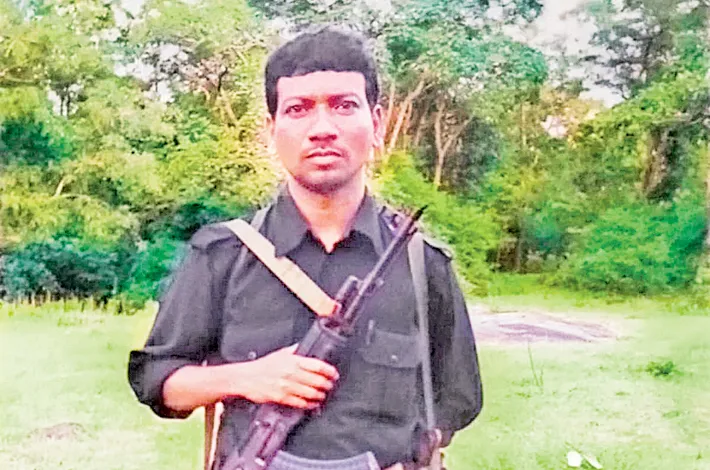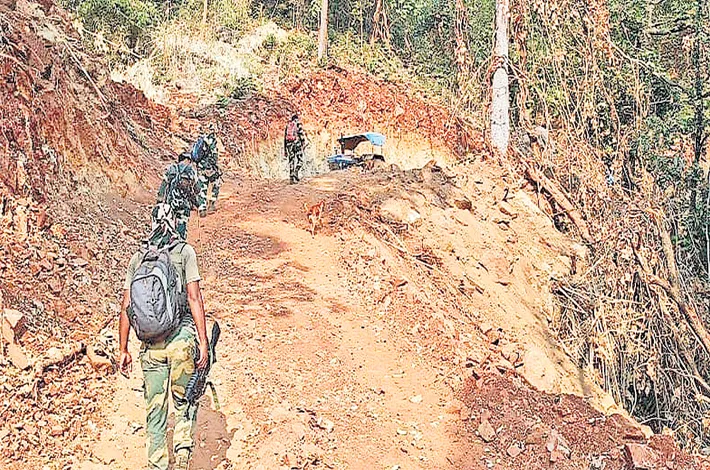Madvi Hidma: Architect of Maoist Insurgency
19-11-2025 12:00:00 AM

Madvi Hidma, alias Santosh, Deva, or Hidmalu, stood as one of country’s most elusive and dreaded Maoist commanders until his death in a fierce encounter on Tuesday, near the tri-junction of Chhattisgarh, Andhra Pradesh, and Telangana. As the chief of the Communist Party of India (Maoist)'s People's Liberation Guerrilla Army (PLGA) Battalion No. 1—the outfit's most lethal and mobile unit—he orchestrated a reign of terror across the dense Dandakaranya forests, masterminding over 25 devastating attacks that claimed hundreds of lives, including 155 security personnel.
His elimination, alongside his wife Madakam Raje and five other cadres, marked a pivotal blow to the dwindling Maoist insurgency, with authorities recovering AK-47s and pistols from the site. Hidma's bounty had swelled to over Rs 1 crore on the National Investigation Agency's (NIA) most-wanted list, underscoring his status as a phantom-like figure who evaded capture for decades.
Born in 1981 in the remote tribal hamlet of Puvarti, on the Sukma-Bijapur border in Chhattisgarh's Bastar region, Hidma embodied the grievances of Adivasi communities ravaged by displacement and exploitation. The son of Punji Madvi, a local tribal woman, he grew up amid the red sands and sal forests of what was then undivided Madhya Pradesh. With limited formal education—completing only up to Class 10—Hidma's worldview shifted irrevocably in the early 1990s.
Witnessing Maoist cadres dig a community pond in his village ignited his revolutionary fervor. At just 10 years old, in 1991, he was recruited as a "Bal Sangham" (child cadre) by senior leaders Ramanna and Badranna, thrusting him into the CPI (Maoist)'s ideological fold. This early induction, common in Bastar's Maoist heartland, transformed the lanky jungle boy into a hardened guerrilla, leveraging his innate knowledge of the terrain for survival and sabotage.
Hidma's ascent was meteoric, fueled by ruthless efficiency and unyielding loyalty. His first posting came in 2002 in Madhya Pradesh's Balaghat region, honing his skills in jungle warfare. By 2004, he was secretary of the Konta Area Committee in Sukma, his home turf. Promotions followed swiftly: commander of Company No. 3 in 2007, deputy head of PLGA Battalion No. 1 in 2009, and its full commander that same year. Overseeing 130–150 armed cadres from Sukma and Bijapur, he turned the battalion into a specter haunting security forces. By 2021, after 12 years at the helm, he yielded direct command to Barse Deva but retained oversight as a Dandakaranya Special Zonal Committee (DKSZC) member.
This year, his stature peaked with elevation to the CPI (Maoist) Central Committee—the second-highest echelon after the Politburo—positioning him as a de facto powerbroker among tribal cadres wary of Telugu-dominated leadership. As DKSZC secretary, he dictated strategy from hidden forest redoubts, blending military prowess with political acumen.
Hidma's notoriety stemmed from a trail of ambushes that exposed the fragility of India's counter-insurgency efforts. In the 2010 Dantewada massacre, his forces annihilated a CRPF convoy, killing 76 personnel in Sukma's Tadmetla hills—the deadliest single Naxal strike. The 2011 Tadmetla attack felled another 75 jawans, while the 2013 Darbha Valley ambush claimed senior Congress leaders, including Mahendra Karma.
Twin 2017 Sukma assaults—Bankupara (12 dead) and Burkapal (25 dead)—targeted road-builders, crippling infrastructure projects. Later hits included the 2020 Minpa-Burkapal clash (17 slain) and 2021 Tarrem ambush (22 killed). These operations, executed with IEDs, snipers, and hit-and-run tactics, not only inflicted tactical defeats but symbolized Maoist resistance to "corporate loot" of Adivasi lands.
In his final days, Hidma's isolation deepened. A week before his death, Chhattisgarh Home Minister Vijay Sharma appealed through Punji Madvi, who tearfully urged her son to surrender. Defiant, Hidma reportedly vowed to fight alone if needed. He had narrowly escaped a 2025 Karregutta hills operation that killed 31 comrades. but intelligence breakthroughs—bolstered by surrenders and drone surveillance—cornered him in a dawn raid, ending a 34-year saga.
Hidma's legacy is dual-edged: to Maoists, a folk hero defending the dispossessed; to the state, a terrorist whose elimination signals the insurgency's twilight. His fall, amid the CPI (Maoist's) leadership vacuum post-Nambala Keshava Rao's May death, may fracture Bastar's red corridor, but it underscores the enduring cycle of poverty and rebellion in India's "internal colony."








